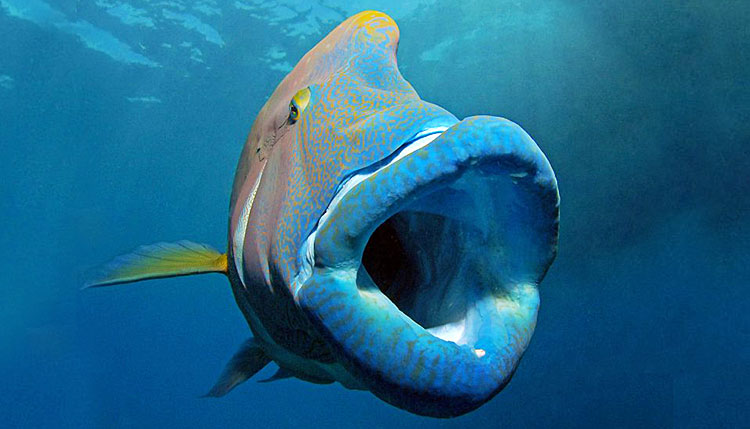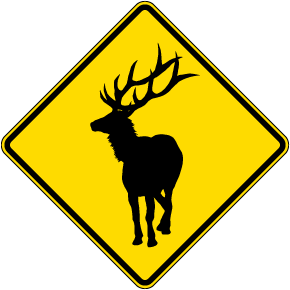Animals With Big Lips: Does Having Big Lips Benefit Animals?
By Elizabeth Dandy. Updated: June 2024.

Provided by TruthAboutAnimals (Photo: iStock by Getty Images).
Have you ever wondered which animals have the biggest lips? Well, wonder no more! In this article, we’ll introduce you to some of the animals with the biggest lips in the world.
One reason that animals might have big lips is to protect their mouths. The lips can help keep dirt and other things out of the mouth, which can help keep the animal healthy.
Another reason that animals might have big lips is to help them eat. Animals that eat a lot of fruits or vegetables might need big lips to help them eat all of the food.
Big lips can also be helpful for animals when they are fighting. Animals that fight a lot, like lions and tigers, might use their big lips to scare their opponents. They might also use them to bite their opponents.
From Hippos to Napoleon Fish, these creatures are sure to surprise you!
Table of Contents.
What animals have big lips?
There are a variety of animals that have big lips. This includes but is not limited to: hippopotamus, rhinoceros, elephant, and manatee.
Each of these animals has their own unique reason for having large lips. The hippopotamus uses its big lips to help it stay cool in the water and to gather food.
The rhinoceros uses its big lips to help it eat tough vegetation. The elephant uses its big lips to gather food and to drink water. The manatee uses its big lips to help it eat underwater vegetation.
Why do some animals have big lips?
There are a few reasons why some animals have big lips. One reason is that it helps them to attract mates. Animals with big lips often have bright colors around their mouths, which makes them more noticeable to potential mates.
Additionally, big lips can help an animal to make loud noises, which is also important for attracting mates. Finally, big lips can be helpful for animals that need to consume large amounts of food, as they can take in more food at once.
What are the benefits of having big lips?
There are a few benefits to animals having big lips. One benefit is that it helps them to better gather food. Another benefit is that it provides them with better protection from the sun and other elements.
Finally, big lips can help an animal to make a louder and more distinct call, which can be helpful in attracting mates or warning predators.
Are there any disadvantages to having big lips?
Some people might say that big lips are a disadvantage because they can be perceived as being unattractive. Others might say that having big lips can be advantageous because they can be used to attract mates or make certain facial expressions.
Ultimately, it is up to the individual to decide whether or not they think having big lips is a disadvantage or advantage.
How can you tell if an animal has big lips?
There are a few ways to tell if an animal has big lips. One way is to look at the size of the animal’s mouth. If the mouth is large, then the animal likely has big lips.
Another way to tell is to look at the shape of the animal’s face. If the face is round and full, then the animal probably has big lips. Finally, you can look at the animal’s teeth. If the teeth are large and protrude from the mouth, then the animal likely has big lips.
Camels.
A camel’s lips are specially adapted to the dry, arid conditions of the desert. They are thick and leathery, which helps to protect them from the sun and wind. The lips are also used to help the camel conserve water by sealing in moisture.
Camels are one of the oldest domesticated animals in the world. They are used for transportation, milk, meat and wool. Camels can go for days without water and can survive in some of the most extreme environments on earth.
There are two types of camels: Dromedary camels have one hump and Bactrian camels have two humps.
Hippos.
Hippos are one of the most interesting animals on the planet. Not only are they absolutely massive, but they also have some of the biggest lips in the animal kingdom.
Their lips are so big, in fact, that they can reach up to four feet in length! And if that wasn’t enough, their tongues are also incredibly long, measuring up to two feet in length.
Interestingly, hippos use their lips for more than just eating. They also use them as a form of communication, with different vocalizations meaning different things. For example, a hippo may grunt to show contentment, while a lower pitched noise may indicate aggression.
So next time you see a hippo at the zoo, be sure to take a closer look at those impressive lips!
Beluga Whales.
Did you know that beluga whales have some of the biggest lips in the animal kingdom? That’s right, these massive marine mammals boast lips that can measure up to 15 inches long!
While their large lips might not be the most aesthetically pleasing feature, they do serve an important purpose. Beluga whales use their lips to help them capture prey and filter out food from the water.
So, next time you see a picture of a beluga whale, take a closer look at its lips and be amazed by the size of them!
Big-lip Damselfish.
The big-lip damselfish is a small, brightly colored fish that is found in the reefs of the Indo-Pacific. As its name suggests, this fish has large lips that it uses to suck up food from the bottom of the reef.
The big-lip damselfish (Plectroglyphidodon gibbosus) is a damselfish of the family Pomacentridae. It is found in the Indo-Pacific region. This species reaches a length of 10 cm (3.9 in).
The big-lip damselfish is a voracious eater and can often be seen chasing after smaller fish. This fish is also known to be very aggressive and will often attack other fish that come too close to its territory.
Napoleon Fish.
The Napoleon fish is a species of freshwater fish that is native to South America. The fish gets its name from its large lips, which are similar to those of the French emperor Napoleon Bonaparte.
The Napoleon fish can grow to be over two feet long and weigh up to 15 pounds. The fish is known for its voracious appetite, and it has been known to eat other fish, reptiles, mammals, and even birds.
Star Sapphires.
When it comes to star sapphires, there’s no denying that they’re some of the most beautiful creatures on the planet. With their big, luscious lips, they’re definitely a sight to behold!
Interestingly enough, however, not all star sapphires are born with big lips. In fact, it’s quite the opposite! Star sapphires typically have very thin lips that are barely noticeable.
It’s only when they reach maturity and begin to produce offspring that their lips start to swell up and become more pronounced.
So what’s the reason behind this strange phenomenon? Well, scientists believe that it’s all part of the star sapphire’s reproductive strategy.
By attracting mates with their big lips, they’re able to ensure that their genes are passed on to the next generation.
Of course, not everyone is a fan of this strategy. Some people believe that it’s nothing more than a gimmick and that star sapphires are just looking for a quick way to get laid.
Whatever the case may be, there’s no denying that these creatures are fascinating creatures indeed!
Proboscis Monkeys.
Proboscis monkeys are one of the most interesting animals out there – not only because of their big lips, but also because of their interesting social habits. In this section, we’ll take a closer look at these amazing creatures and find out what makes them so unique.
Proboscis monkeys are native to the island of Borneo, where they live in groups of up to 30 individuals. These monkeys are easily recognizable thanks to their large noses, which can grow up to 7 inches long in males.
The nose is used as a sexual attractant – the longer it is, the more attractive the monkey is to females.
Interestingly, proboscis monkeys are also known for their unusual social habits. Unlike other monkey species, which live in hierarchical groups with a strict social hierarchy, proboscis monkeys live in more egalitarian societies.
All members of the group have equal access to food and resources, and there is no aggression or fighting within the group. This makes proboscis monkeys one of the most peaceful monkey species out there.
If you’re ever lucky enough to see a proboscis monkey in person, you’ll be sure to remember it thanks to its big lips!
Orangutans.
Orangutans are one of the most interesting animals on the planet. Not only are they incredibly intelligent, but they also have some of the biggest lips in the animal kingdom.
Interestingly, Orangutans use their lips for more than just eating. They also use them for communication, as they are able to make a wide variety of sounds that convey different meanings.
So, next time you see an Orangutan, be sure to give them a big smile. Who knows, they might just smile back!
Flowerhorns.
Flowerhorns are a type of fish that is known for its big lips. These fish are native to South America and can grow to be quite large, up to two feet in length.
They are popular pets in many parts of the world and are known for being relatively easy to care for. Flowerhorns are also known for being very friendly fish and will often approach people who are nearby their tank.
Conclusion.
We hope you enjoyed learning about all of these animals with big lips! From the adorable tapir to the regal lion, there are so many interesting creatures out there with this unique feature. Do you have a favorite animal with big lips? Let us know.
See what others are doing.
